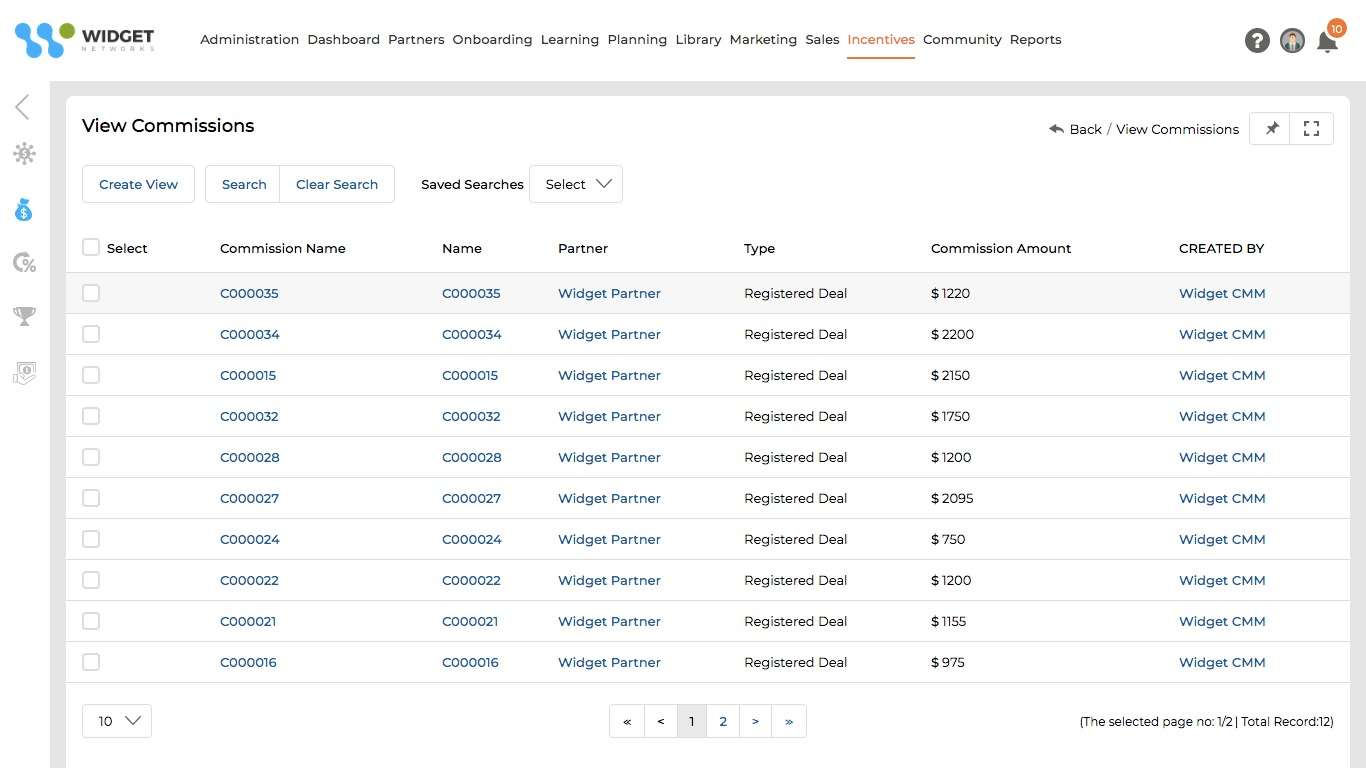Best Practices Articles

How to Excel in Channel Sales Management: A Complete Guide
Introduction
Channel sales management is a critical aspect of business strategy for organizations looking to expand their reach and drive sales growth. Channel sales involve leveraging third-party partners to sell products or services on behalf of the organization. However, managing channel sales can be challenging, as it involves managing various partners, processes, and programs across multiple verticals.
In this article, we will provide a comprehensive guide on how to excel in channel sales management. The article will be divided into three parts. In part one, we will discuss what a channel is and how channel sales work in the top 10 market sectors in the US by GDP. In part two, we will discuss the core activities of channel sales management, including partner lifecycle management. In part three, we will discuss how to excel in channel sales management by optimizing your programs, processes, people, and platforms.
Part 1: What is a Channel?
Channels are a way to reach customers through third-party partners who sell products or services on behalf of the organization. Channels have become an essential part of the sales strategy for many organizations. These third-party partners help organizations reach a wider audience and sell products or services on their behalf. Channels can be diverse, including resellers, agents, brokers, service providers, and alliance partners. They also play an important role in just about every major vertical across the globe, including finance, insurance, real estate, professional and business services, healthcare, manufacturing, information services, retail and more. In each of these verticals, channel sales management must be approached differently and requires industry-specific strategies to optimize sales.
Channel sales are a crucial aspect of an organization's sales strategy, and different market sectors require specific strategies to optimize sales. Organizations must understand the specific needs of their customers and the buying behavior of their channel partners in each vertical to develop effective channel sales strategies. They must also ensure that their products or services comply with industry regulations and standards and provide adequate training and support to their channel partners.
By understanding the market trends and the buying behavior of customers in each vertical, organizations can develop tailored sales strategies to reach their target audience effectively. For example, in the healthcare sector, customers may be more interested in products that comply with healthcare regulations, while in the retail sector, customers may be more interested in products that offer convenience and affordability.
Organizations must continuously monitor and adapt their channel sales strategies to stay competitive and meet the evolving needs of their customers. With the right approach, however, organizations can leverage their channel partners to expand their reach and increase their sales in each vertical.
Part 2: Core Activities of Channel Sales Management
To excel in channel sales management, organizations need to focus on several core activities, including:
- Partner types and market segments: Understand what types of partners to recruit, what market segments to go after, and how to get local and global coverage.
Organizations need to identify the right partners for their channel sales strategy. The most common types of partners include resellers, agents, brokers, services providers, and alliance partners. Each partner type has its strengths and weaknesses, and organizations need to select the right partners based on their business needs.
In addition to selecting the right partner types, organizations also need to identify the right market segments to pursue. This includes identifying the right geographies, customer segments, and product segments.
- Partner lifecycle management: This includes partner recruitment, onboarding, training, enablement, incentives, demand generation, sales fulfillment, services delivery, and overall performance management. Partner lifecycle management may vary across different verticals, and organizations need to understand these differences to optimize their channel sales management.
-
- Partner recruitment: Organizations need to identify the right partners based on their business needs. This includes evaluating potential partners based on their sales performance, market reach, and capabilities.
- Onboarding: Once the partners are identified, organizations need to onboard them to their channel sales program. This includes providing training, resources, and tools to enable them to sell effectively.
- Training: Partners need to be trained on the product, the sales process, and the tools that they will be using to sell the product.
- Enablement: Partners need to be enabled to sell effectively. This includes providing them with marketing collateral, sales tools, and other resources.
- Incentives: Organizations need to provide partners with incentives to drive sales growth. This includes commissions, rebates, market development funds (MDF) and other financial incentives that motivate partners to sell more.

- Demand generation: Organizations need to develop marketing campaigns and other initiatives to generate demand for their products. This includes developing targeted marketing materials, organizing events, and other outreach initiatives.
- Sales fulfillment: Partners need to be able to fulfill orders quickly and efficiently. This includes ensuring that the product is delivered on time and that the customer is satisfied with the product.
- Services delivery: Partners need to be able to provide support and services to customers after the sale. This includes providing technical support, installation, and other services.
- Performance management: Organizations need to track the performance of their partners and provide feedback to help them improve their performance. This includes monitoring sales metrics, providing coaching and feedback, and addressing any issues that arise.
- Sales performance management: It is essential to constantly manage sales performance and analyze key drivers to understand what partner types are performing the best and focus on expanding those capabilities to other partners. To optimize sales performance, organizations need to focus on several key metrics, including:
- Sales growth: This measures the percentage increase in sales over a specific period.
- Market share: This measures the percentage of the market that the organization has captured.
- Customer satisfaction: This measure how satisfied customers are with the product and the service they received.
- Partner performance: This measures the performance of individual partners and identifies areas for improvement.
Part 3: How to Excel in Channel Sales
To excel in channel sales, organizations need to focus on the four Ps of channel sales management: programs, process, people, and platform.
Programs: There are various types of channel sales programs, including marketing programs, sales programs, and partner programs. Organizations need to optimize their channel sales programs to drive sales growth.
- Marketing programs: Organizations need to develop targeted marketing campaigns to reach their target customers. This includes developing marketing materials, organizing events, and other outreach initiatives.
- Sales programs: Organizations need to develop sales initiatives to drive sales growth. This includes providing training and resources to sales teams, developing sales incentives, and other initiatives.
- Partner programs: Organizations need to develop programs that support their partners' growth and success. This includes providing training, resources, and tools to enable partners to sell effectively.
- Program management framework: This includes developing a framework for managing channel sales programs, including defining roles and responsibilities, establishing performance metrics, and reporting mechanisms.
- Performance metrics: Organizations need to develop metrics that measure the effectiveness of their channel sales programs. This includes tracking sales growth, market share, customer satisfaction, and partner performance.
- Reporting mechanisms: Organizations need to develop reporting mechanisms that provide visibility into the performance of their channel sales programs. This includes developing dashboards and other reporting tools.
- Roles and responsibilities: Organizations need to identify the right roles and responsibilities for managing channel sales programs. This includes identifying key stakeholders, such as program managers, sales managers, and partner managers.
- Performance management system: Organizations need to develop a performance management system that provides feedback to employees and partners. This includes providing coaching and feedback, conducting performance evaluations, and addressing any issues that arise.
- Culture of collaboration and trust: Organizations need to develop a culture of collaboration and trust to drive channel sales programs’ success. This includes promoting teamwork, providing training and development opportunities, and fostering open communication.
- Partner relationship management (PRM): PRM software is designed to manage partner relationships and optimize partner performance. This includes automating partner onboarding, training, and enablement, providing partner marketing resources, and tracking partner performance.
- Through-channel marketing automation (TCMA): TCMA software is designed to help organizations manage their channel marketing initiatives. This includes providing partners with marketing materials, tracking the performance of marketing campaigns, and optimizing marketing initiatives to drive sales growth.
- Unified partner management: Unified partner management platforms provide a single pane of glass for managing channel sales programs. This includes providing end-to-end visibility and control over channel sales programs, from partner recruitment to sales fulfillment.
Conclusion
Channel sales management is critical to driving sales growth for organizations. To excel in channel sales management, organizations need to understand what channels are, what channel sales mean in different verticals, and the core activities of channel sales management. Organizations also need to optimize their programs, processes, people, and platforms to drive sales growth.
By focusing on the four Ps of channel sales management, organizations can develop effective channel sales programs that drive sales growth. By developing targeted marketing campaigns, optimizing sales initiatives, and supporting partner growth and success, organizations can drive sales growth in different verticals.
Through effective partner lifecycle management, organizations can ensure that their partners are trained, enabled, and incentivized to sell effectively. By monitoring sales performance and analyzing key drivers, organizations can identify what partner types are performing the best and focus on expanding those capabilities to other partners.
Finally, by leveraging the right set of technology platforms, such as PRM or TCMA, organizations can provide a unified single pane of glass for managing channel sales programs. Through unified partner management, organizations can gain end-to-end visibility and control over channel sales programs, enabling them to optimize their programs, processes, people, and platforms to drive sales growth.
For more information, please check this article.
Best Practices Guidebook
 How to Start and Scale Partner Ecosystems Best Practices
How to Start and Scale Partner Ecosystems Best PracticesDownload Guide
 The Evolution of PartnerOps: Past, Present & Future Best Practices
The Evolution of PartnerOps: Past, Present & Future Best PracticesDownload Guide
 Mastering Channel Sales: Strategies, Best Practices, and Growth Tactics for 2025
Mastering Channel Sales: Strategies, Best Practices, and Growth Tactics for 2025Download Guide
 Winning with Partner Advisory Councils: Best Practices for Partner Engagement & Growth
Winning with Partner Advisory Councils: Best Practices for Partner Engagement & GrowthDownload Guide
 The Future of Partner Ecosystems Best Practices
The Future of Partner Ecosystems Best PracticesDownload Guide
 The AI Revolution: How Technology and Talent are Shaping the Future
The AI Revolution: How Technology and Talent are Shaping the FutureDownload Guide
 Top 105 Partner Management Metrics that Matter Best Practices
Top 105 Partner Management Metrics that Matter Best PracticesDownload Guide
 Mastering PRM Integration Best Practices
Mastering PRM Integration Best PracticesDownload Guide
 Building a Sales Partner Portal with Salesforce Best Practices
Building a Sales Partner Portal with Salesforce Best PracticesDownload Guide
 Building and Managing Partner Ecosystems Best Practices
Building and Managing Partner Ecosystems Best PracticesDownload Guide
 Mastering Co-Marketing and Co-Selling Best Practices
Mastering Co-Marketing and Co-Selling Best PracticesDownload Guide
 Transforming Partner Ecosystems Best Practices
Transforming Partner Ecosystems Best PracticesDownload Guide
 Mastering Partner Ecosystems Best Practices
Mastering Partner Ecosystems Best PracticesDownload Guide
 Mastering Partner Onboarding Best Practices
Mastering Partner Onboarding Best PracticesDownload Guide
 Partner Ecosystem Management Best Practices
Partner Ecosystem Management Best PracticesDownload Guide
 B2B Marketing in the Age of Intelligence Best Practices
B2B Marketing in the Age of Intelligence Best PracticesDownload Guide
 Multi-Partner Co-Selling Best Practices
Multi-Partner Co-Selling Best PracticesDownload Guide
 A Guide to Enhance Channel Sales Efficiency
A Guide to Enhance Channel Sales EfficiencyDownload Guide







